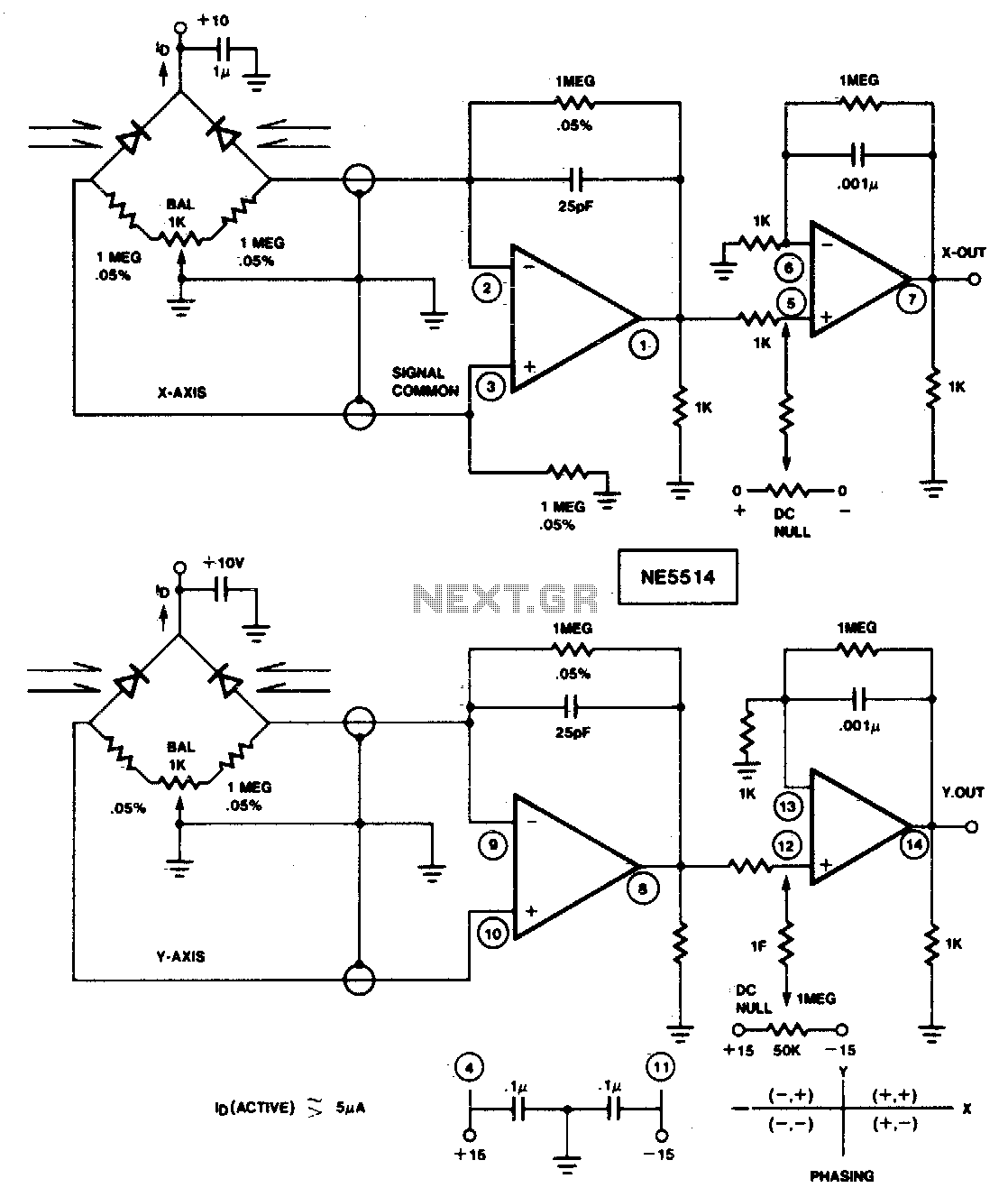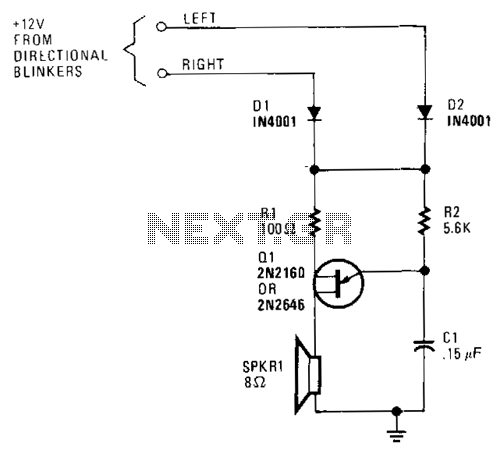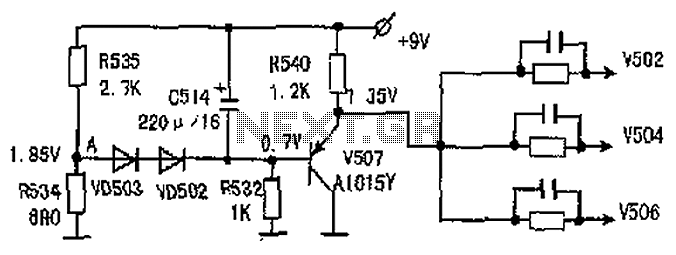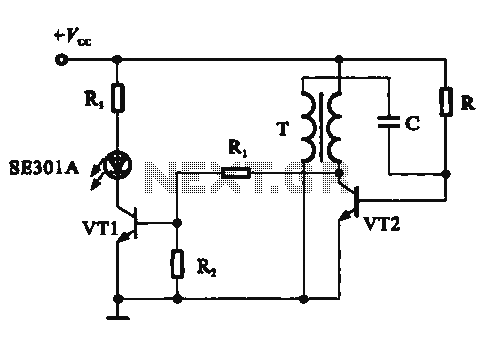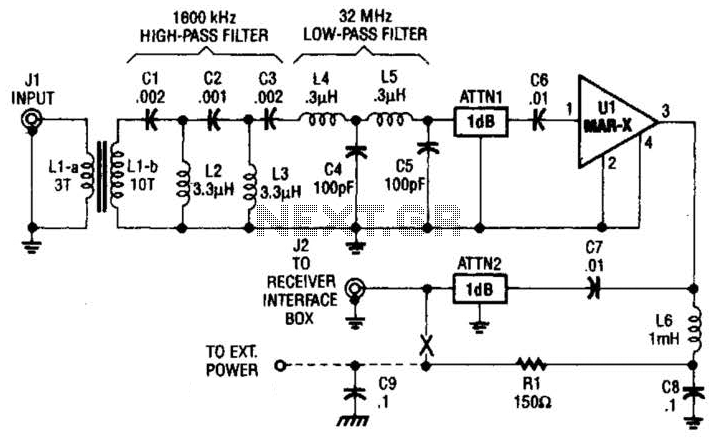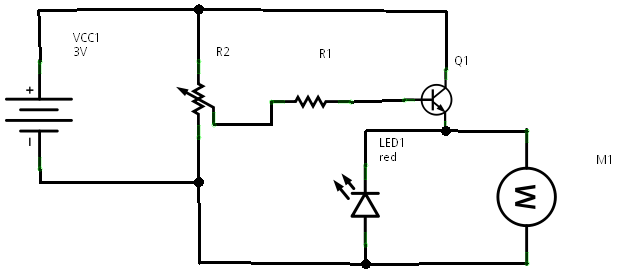
Amplifier input signal overdrive auto-protection
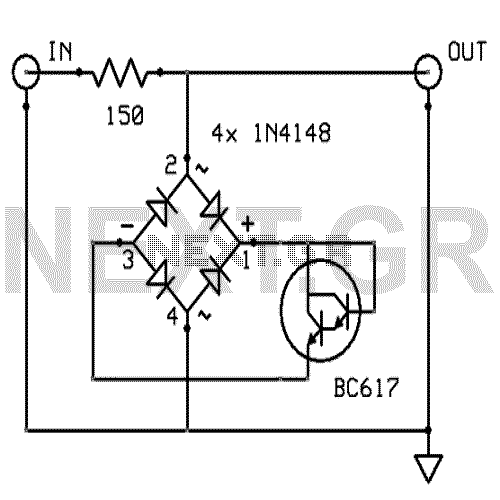
That circuit protects the overdriven signals going into an amplifier. Instead of a zener diode, we use a transistor. That way we ensure that the above the ordinary input voltages (1 volt r.m.s.) can be achieved without distortion. Also, the use of a transistor limits the number of components used in this schematic. More: You don't need any potentiometers or voltage dividers. The total distortion at the output until 700mV r.m.s. is 0%. Above that until 1V r.m.s. the total harmonic distortion can be 0.02%.
The described circuit functions as a protective mechanism for signals that exceed the standard operational threshold before reaching an amplifier. The key component utilized in this design is a transistor, which serves as a substitute for the more traditional zener diode. This substitution is significant as it allows the circuit to effectively manage higher input voltages, specifically those above 1 volt r.m.s., without introducing distortion to the signal.
The circuit's design is notably efficient, as it minimizes the component count by eliminating the need for additional elements such as potentiometers and voltage dividers. This simplification not only reduces the complexity of the circuit but also enhances reliability by decreasing the number of potential points of failure.
The performance specifications indicate that the circuit maintains a total harmonic distortion (THD) of 0% at output levels up to 700mV r.m.s. This is a critical parameter for audio applications, as it ensures that the output signal remains true to the input signal within this range. For output levels exceeding 700mV r.m.s. and approaching 1V r.m.s., the total harmonic distortion is still impressively low at 0.02%. This level of distortion is acceptable for high-fidelity applications, ensuring that the integrity of the audio signal is preserved even at higher levels.
In summary, this circuit is designed to protect amplifiers from overdriven signals while ensuring minimal distortion, thereby providing an effective solution for audio signal management. The use of a transistor not only simplifies the design but also enhances the performance characteristics of the circuit.That circuit protects the overdriven signals going into an amplifier. Instead of a zener diode we use a transistor. That way we ensure that the above the ordinary input voltages ( 1 volt r.m.s.) can be acheaved without distortion. Also the use of a transistor limits the number of components used in this schematic. You don't need any potentiometers or voltage dividers. The total distortion at the output until 700mV r.m.s. is 0%. Above that until 1V r.m.s. the total harmonic distortion can be 0.02%. 🔗 External reference
The described circuit functions as a protective mechanism for signals that exceed the standard operational threshold before reaching an amplifier. The key component utilized in this design is a transistor, which serves as a substitute for the more traditional zener diode. This substitution is significant as it allows the circuit to effectively manage higher input voltages, specifically those above 1 volt r.m.s., without introducing distortion to the signal.
The circuit's design is notably efficient, as it minimizes the component count by eliminating the need for additional elements such as potentiometers and voltage dividers. This simplification not only reduces the complexity of the circuit but also enhances reliability by decreasing the number of potential points of failure.
The performance specifications indicate that the circuit maintains a total harmonic distortion (THD) of 0% at output levels up to 700mV r.m.s. This is a critical parameter for audio applications, as it ensures that the output signal remains true to the input signal within this range. For output levels exceeding 700mV r.m.s. and approaching 1V r.m.s., the total harmonic distortion is still impressively low at 0.02%. This level of distortion is acceptable for high-fidelity applications, ensuring that the integrity of the audio signal is preserved even at higher levels.
In summary, this circuit is designed to protect amplifiers from overdriven signals while ensuring minimal distortion, thereby providing an effective solution for audio signal management. The use of a transistor not only simplifies the design but also enhances the performance characteristics of the circuit.That circuit protects the overdriven signals going into an amplifier. Instead of a zener diode we use a transistor. That way we ensure that the above the ordinary input voltages ( 1 volt r.m.s.) can be acheaved without distortion. Also the use of a transistor limits the number of components used in this schematic. You don't need any potentiometers or voltage dividers. The total distortion at the output until 700mV r.m.s. is 0%. Above that until 1V r.m.s. the total harmonic distortion can be 0.02%. 🔗 External reference
